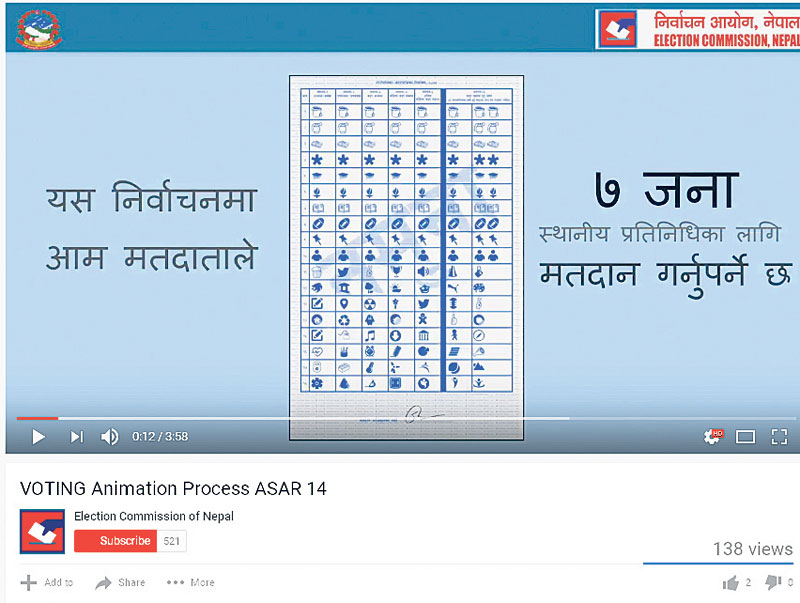KATHMANDU, July 19: Nearly a month after the second phase local elections, the Election Commission (EC) is yet to make public the full details of the invalid vote.
The number of invalid votes is high even through the election body spent millions on voter education.
The invalid vote was as high in the second round poll as in the first round, according to election officials. An average of 21 percent invalid vote was recorded in Biratnagar. Altogether 80,477 votes were cast in Biratnagar Metropolis, and out these 61,270 were valid.
Similarly, 17.11 percent of the vote was invalid in Kapilvastu Municipality and 22.62 percent in Krishnanagar Municipality. In Lalitpur where the election was conducted in the first phase, the invalid vote was around 17 percent .
Election officials say the invalid vote was higher in city areas.

“Voter educators went about teaching people how to vote but people in the cities felt that they already knew everything about voting,” said Surya Aryal, chief of the Election Education Information Center (EEIC), which is under the election body.
Less than month till polls but voter education yet to kick in

Aryal said around Rs 750 million was allocated for voter education. As many as 20,000 voter educators were mobilized for a month for the first round polls. Voter educators were at work for more than a month in provinces 1, 5 and 7, which went to polls in the second round.
“We spent around 420 million on social mobilizers who were trained as voter educators, Each voter educator was paid Rs 12,000 as monthly salary and an additional 3,000 as allowance,” said Aryal adding, “This led to huge expenditures.”
Some election officials doubt that work on the ground was carried out with due diligence.
Apart from mobilizing voter educators, the election body claimed to have carried out various activities including mock polls, public service announcements (PSAs) over various media, advertisements in newspapers and door-to-door campaigns. These activities, however, failed to yield the expected outcomes.

Millions were spent on the PSAs alone.
PSAs uploaded on Youtube were viewed by very few. Only 138 people watched the PSA titled Voting Animation Process while another PSA – Aaidil Chunab Ho in the Tharu language – was viewed by just 24 people. Another PSA prepared by Maha Sanchar was seen by 14 viewers.
Election officials say the invalid vote percentage is high compared to previous elections. They also realized that the voter education was ‘ineffective’ and a large number of voters turned in invalid votes.
The totally invalid ballot is around 2 percent. This means none of the seven candidates on the ballot paper received a valid vote.
“Around 9-10 percent invalid vote was recorded in the first round election,” said EC Spokesperson Surya Prasad Sharma.
“We are yet to calculate candidate-specific invalid votes although the totally invalid ballot is between 2-3 percent,” said Election Commissioner Narendra Dahal.
Commissioner Dahal blamed the political parties for the increase in the invalid vote. “Lack of proper orientation by the political parties and their last-minute electoral alliances contributed significantly to the invalid vote,” he said.
Major political parties forged electoral alliances just ahead of the candidacy nominations. But they did not educate their cadres about voting techniques and people even voted for parties that had not fielded any candidates.
The local election was also very complicated as candidates for seven different positions at the local units had to be incorporated into a single ballot. This confused many voters, significantly increasing the number of invalid votes.
In view of the increased invalid vote, the EC has decided to change its voter education strategy for upcoming elections. “Traditional door-to-door campaigns proved a bit less effective mainly in city areas. So, we are planning campaign-based voter education such as mock pollings and street drama so that a maximum number of voters can participate and learn about voting,” said Aryal.
(Ajit Tiwari in Biratnagar and Kiranman Bajracharya in Kapilvastu contributed to this report)






































